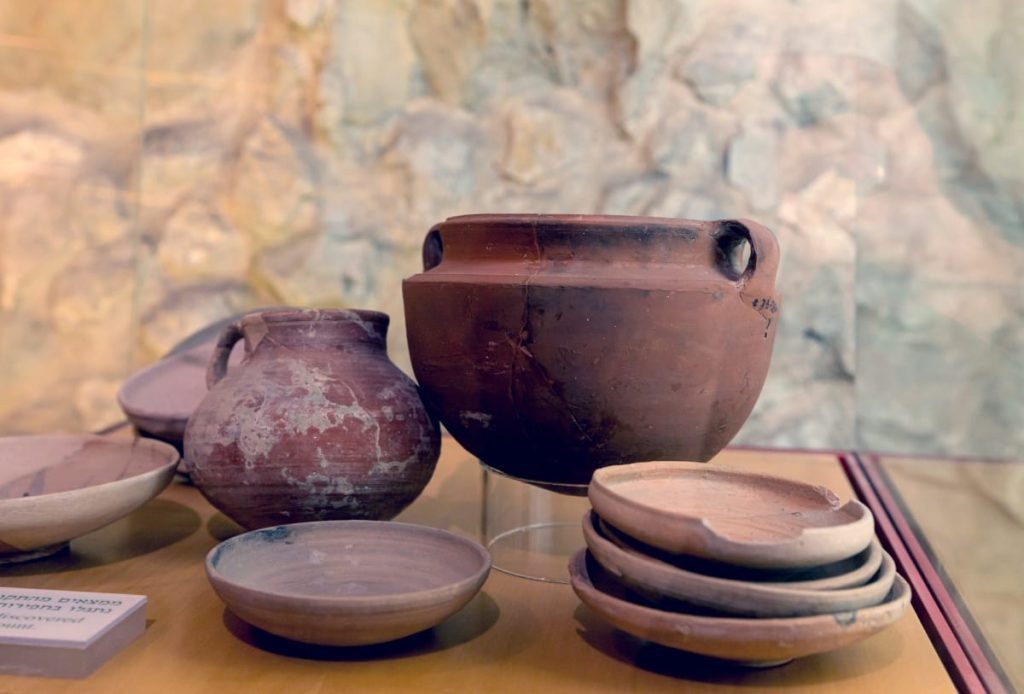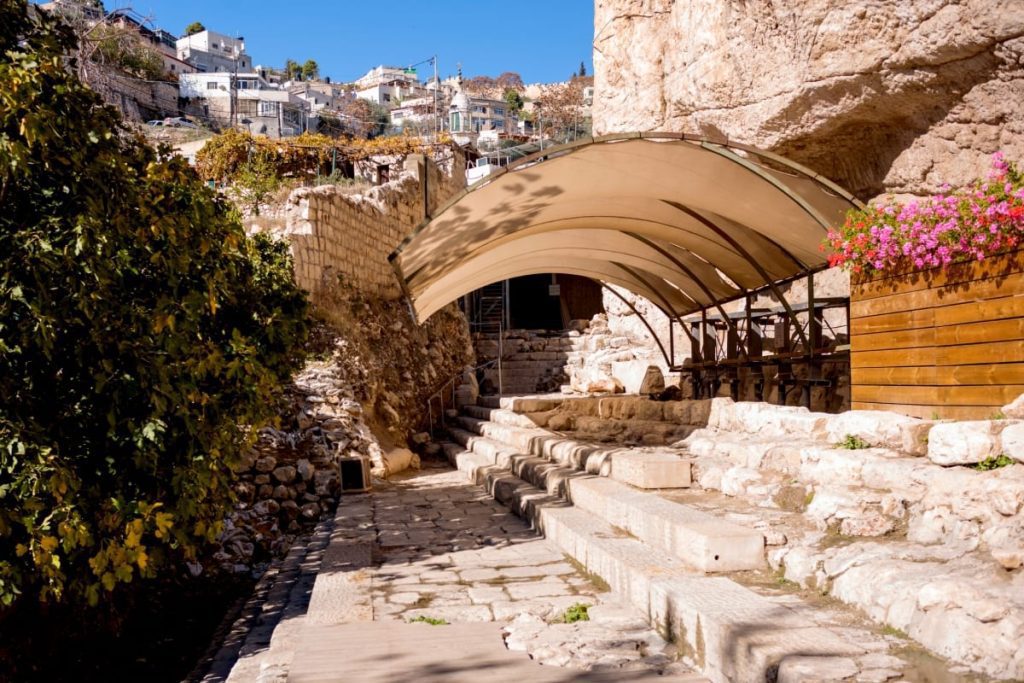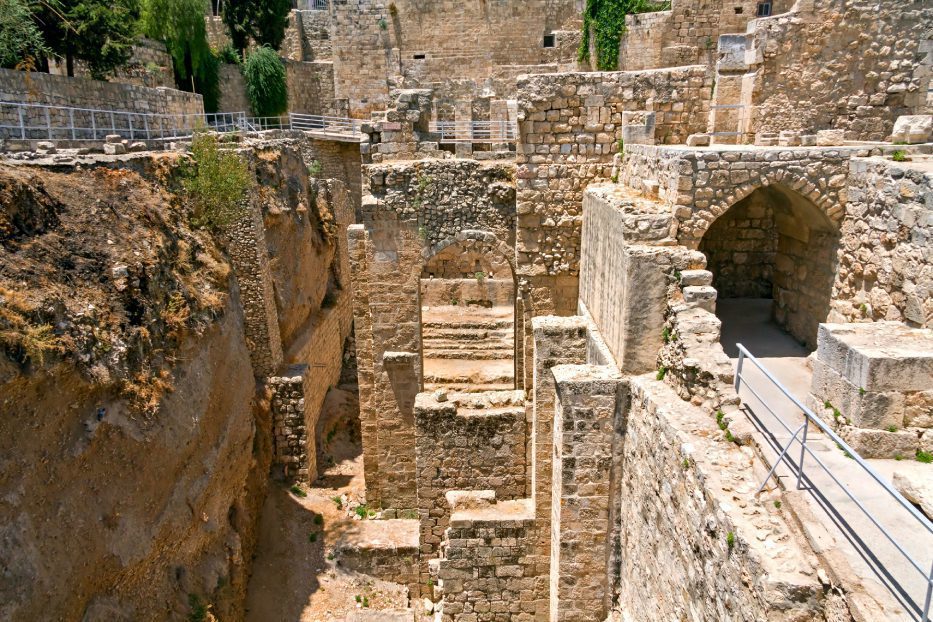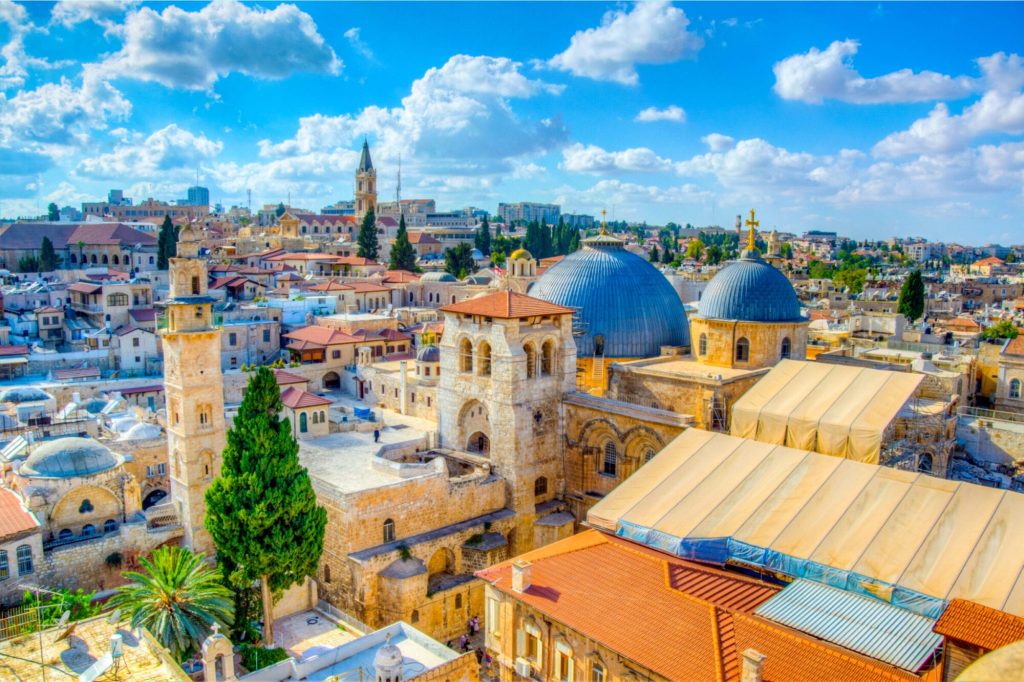In the heart of the ancient city of Jerusalem, beneath its cobbled streets and sacred sites, lies a labyrinth of hidden passages that once sustained life in a desert land. Join us as we journey through time to uncover the remarkable water systems that sustained the people of ancient Jerusalem, an intricate network that mirrors the ingenuity and resourcefulness of its inhabitants.
Jerusalem Archaeological Tour

1. The Gihon Spring: Life’s Wellspring
So our adventure begins at the Gihon Spring, the source of life that fed Jerusalem’s earliest inhabitants. Nestled outside the city walls, this spring gushed cool, clear water—a precious commodity in the arid landscape. Discover how this natural blessing sparked the need for innovative engineering solutions.
2. Warren’s Shaft: Carving Through Stone
Descend into the depths, checking out Warren’s Shaft, a vertical tunnel ingeniously carved through solid rock. As you trace the steps of ancient water carriers, contemplate the sheer determination and craftsmanship required to create this lifeline. Marvel at how water was harnessed, a testament to the symbiotic dance between human needs and nature’s bounty.
Warren's Shaft
3. Hezekiah’s Tunnel: A Triumph of Engineering
Follow the path of history’s engineers as you navigate Hezekiah’s Tunnel, a feat of engineering that channeled water from the Gihon Spring into the city’s heart. Feel the cool water flow around your feet, and imagine the awe that accompanied the completion of this life-sustaining conduit.
4. Siloam Pool: Where Miracles and History Meet
Step into the ancient Siloam Pool, where the faithful converged for spiritual and physical cleansing. So, Reflect on the stories of Jesus healing the blind man at this very spot as you consider the intertwining of faith and the practicalities of daily life.
Jerusalem Ultimate Guide

5. The Underground Channel: Hidden Blessings
So uncover the secret underground channel that connected the Pool of Siloam to the Temple Mount—an underground passage used for ceremonial purification by those ascending to the holy site. Contemplate the sacred journey and the meticulous planning that ensured access to the temple’s sanctity.
Jesus' Miracles in Jerusalem

6. Quenching Thirst: An Archeological Odyssey
So, let’s pause to reflect on the significance of these water systems. In a land where water was scarce and precious, the mastery of channeling, storing, and distributing this resource was a cornerstone of urban life. Moreover, these systems also played roles in stories of faith, miracles, and survival, weaving Jerusalem’s history’s physical and spiritual fabric.
Christian Quarter Ultimate Guide

The Gift of Sustainability
So, as our journey through ancient Jerusalem’s water systems concludes, carry with you the echoes of innovation and resilience that characterized this ancient civilization. These water systems weren’t just engineering marvels—they represented the ingenuity of humanity’s connection with its environment. They spoke of the ability to adapt, innovate, and thrive even in the face of challenges.
So, let the story of ancient Jerusalem’s water systems be a reminder that the quest for sustenance, survival, and shared moments of transcendence knows no bounds. Lastly, it’s a legacy that continues to flow through the veins of modern life, a testament to the enduring spirit of humanity and its remarkable ability to harness nature’s gifts.







